Atelier and Ausbau buildings
How Leipzig Is Reinventing Housing
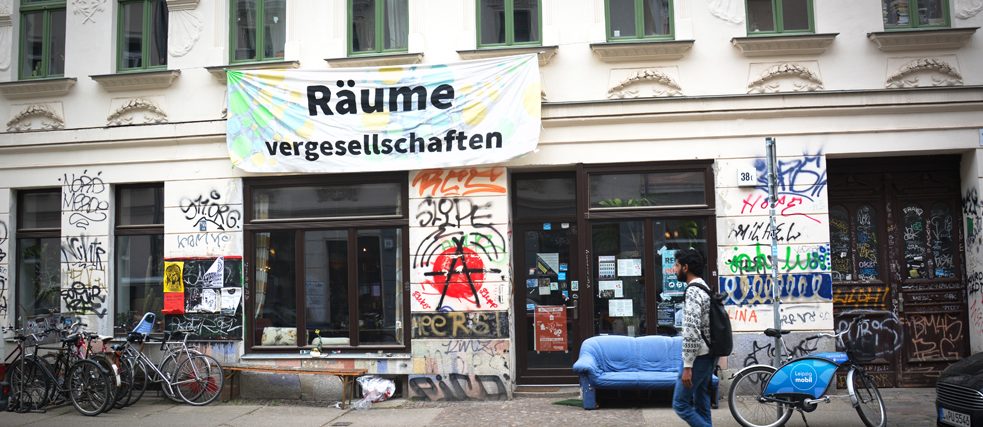
To keep Leipzig affordable for its own residents, the city promotes alternative living and working spaces. It has now become a sort of urban laboratory experimenting with new and unusual models of collective, cooperative and solidarity-based housing.
They call it “the new Berlin". The German and international press is forever poring over the so-called "Hypezig" phenomenon, a portmanteau of "hype" and "Leipzig". Two hundred kilometres away from Berlin, its big sister, Leipzig, a former industrial and cultural hub of East Germany that was deserted by many of its residents after the fall of the Berlin Wall, has been reborn out of its ashes – and at a remarkable pace.
After the reappropriation of vacant apartments that began in the mid-1990s, 2010 marked a turning point in the history of the city: Leipzig, including its industrial wastelands, became a trend. With its very low rents (€3 to €6 per sq m), the city is luring its own residents back and attracting students, artists and tourists... as well as plenty of developers. Property prices are soaring as a result and vacancies are increasingly rare.
In order to keep Leipzig affordable for its own residents, in 2015 the city issued a directive to promote alternative living environments. It set up the Leipziger Freiheit network, which brings a great many associations and cooperatives together to work towards this goal. Since then, the city has funded a number of initiatives and invested in counselling residents who want to develop alternative forms of housing.
Leipzig is now an urban laboratory experimenting with novel and unusual models of collective, cooperative and solidarity-based housing. However, the threat of gentrification is omnipresent.
Atelierhaus entrance, Franz-Flemming-Strasse
The yellow banner on the former Dietzold factory marks Atelierhaus, a project launched by Haushalten e.V. in 2014. For 15 years now this association has been putting artists – and others in precarious housing situations – in touch with owners. "Instead of selling vacant buildings to investors at high prices, we show owners inexpensive ways of making them liveable and accommodating projects and living spaces on the premises," explains Magdalena Bredemann of Haushalten e.V.The association has come up with a new system in which tenants can live on the premises for a fixed period of time without paying rent. In return, they renovate the buildings to keep them from falling into disrepair. Its latest housing model, Atelierhaus, is reserved for artists.
Pilotenkueche studios in Atelierhaus
Martin Holz is vacuuming the second floor of Atelierhaus. This is where he founded Pilotenkueche, or “pilot kitchen”, a dozen artist’s studios inside the building. The contract was drawn up for 11 years, "the longest lease Haushalten has ever achieved," Martin points out. He pays less rent than he would for a studio elsewhere in the city. "But landlords are still the ones who benefit most from the rental model. Owning your own house would be the ideal. That means more responsibility, but also more independence," he adds. However, he is free to design the studio as he sees fit: "I did the electrical installation myself. It’s important to be the decision-maker in projects like these.”An artist from Taiwan is in one of the studios
Pilotenkueche welcomes international and local artists for a three-month period. The project awards grants to applicants from Leipzig, whereas foreign artists have to pay their own way. They are provided with a large studio, support from organizers and curators, and an opportunity to put on their own exhibition in the same building. "The landlord didn't want any companies or businesses, just artists," Martin explains. He is critical of international companies that are locating in Leipzig and driving up the rents in the city.Atelierhaus caretaker and resident Jurek Rotha in his kitchen
Through Pilotenkueche, Jurek has set up his own little private oasis and studio on one whole floor of the building. He has been living here for two and a half years, after having lived in a guardhouse for a while. Like many other buildings in Leipzig, the guardhouse was renovated by a company which then sold it for a high price. The rent in Atelierhaus is still modest and he was allowed to renovate the space as he pleased.Jurek is in charge of administrating and taking care of the place. It’s a part-time job for him. "An artist often needs a little job on the side, so this was perfect for me," he explains.
Roman in the cooperative residents’ street
41-year-old Roman Grabolle is a born-and-bred Leipzig character. He’d been roaming the streets of the city since his youth, then he finally settled down here in 2008. As an archaeologist and historian, he specialized in consulting on the development of cooperative projects, especially for the local authorities and the Mietshäuser Syndikat, or “apartment buildings syndicate”.This spring he volunteered to take anyone interested on a tour of two different forms of alternative housing, one on the east side of the city (Neustadt-Neuschönefeld), the other on the west side (Leutzsch).
East side Ausbau building in Eisenbahnstrasse
The Ausbau building model is simple: in return for paying very low rent, tenants agree to help renovate their building. This scheme was developed by the Haushalten association. "The owners retain ownership, but they don’t have to get much involved in renovating,” Roman explains. “They replace windows or modernize the wiring, for example."He says this form of housing, which is still rather precarious, is particularly popular among young adults and some migrants. Unlike the old guardhouse model, however, these tenants can plan ahead thanks to long-term leases. "At any rate, the building is full!" says Roman.
Pöge-Haus in Hedwigstrasse: a new life for the old print shop
Many of the buildings in Hedwigstrasse were still deserted just a few years ago. The walls were turning grey. Pöge-Haus, a former printers’ shop, was built over a hundred years ago and abandoned in 1994. Since 2009, the premises, which are owned by the city, have been used by artists for cultural projects. In 1996 some of them set up the Kultur- und Wohnprojektgesellschaft GmbH Leipzig-Neustad and presented the city with a plan to buy the building. They committed to developing social activities on the ground floor. Today Pöge-Haus is home to about twenty people and holds exhibitions, dance and yoga classes.The renaissance of Georg-Schwarz-Strasse in west Leipzig
The street is closed for traffic. The regulars mingle with the curious who’ve come to see what Georg-Schwarz-Strasse looks like today. For nine years now, residents have been holding an annual festival to make their street and their projects known to the general public and generally more convivial. A hundred years old now, this used to be a lively shopping street before degenerating into something of a no-go zone in 2008/2009, with a high crime rate and notorious watering holes. Many of its buildings were deserted, no one wanted to buy property here. Outsiders, artists and academics gradually developed projects and settled down here. With support from the local authorities, they bought property here at rock-bottom prices whilst undertaking the lengthy process of overhauling their run-down buildings. Some introduced models for the collective purchase of buildings.Roman lives at Georg-Schwarz-Strasse 9/11
In 2012, Roman and a group of volunteers borrowed money from family, friends and some willing banks to buy up the buildings in Georg-Schwarz-Strasse. They bought jointly in the name of a company established for this purpose. "Under German law, it’s easier for a small group of volunteers to set up a company than a cooperative," their housing association, Wohnungsgesellschaft mbH Central LS W33, explains on their blog. "But our only goal is to maintain affordable housing in the long term."Every month they repay part of the loans they received from friends and banks. "This gives us a lot of leeway: we’re not individual owners, but we’re not dependent on an owner either," explains Roman, who’s been living here since 2015. They have private rooms and share some common areas, such as the kitchen.
Rear window: the apartment buildings syndicate takes on real estate speculators
The Mietshäuser Syndikat, founded in 1999, whose Leipzig offices overlook this courtyard, are responsible for a number of housing projects that serve to stave off property speculation. Some of the grounds have been turned into gardens, there’s a colourfully decorated abandoned old car, and there are musicians playing music and children playing here and there. Under this housing model, the syndicate has joined forces with the residents' association to create a company. Both parties offer shares in the company for the purchase of a building, which thereby becomes the company’s property. The object of this consortium is to take buildings off the real estate market. To date it has established 129 housing cooperatives nationwide, eleven of which are in Leipzig. The residents then work together to ensure that their cohabitation runs smoothly. “We have a fruit and vegetable cooperative and a library," says one resident in the courtyard.Housing cooperatives: a valuable resource worth preserving
"No one can possibly know where we'll be in a few years," warns Roman. Georg-Schwarz-Strasse is the last Gallic village in Leipzig. Over the past ten years, property prices in the city centre have shot up by nearly 40 per cent. And vacant apartments are becoming increasingly scarce. The denizens of Georg-Schwarz-Strasse are determined to ward off gentrification. Some of the balconies fly banners with clear-cut demands: big development schemes to serve purely financial ends are not wanted here.At Café Kaputt
This particular Repair Café is located in the courtyard of Number 9/11: in addition to their private living quarters, the inhabitants have created common areas. Volunteers come here to use the sewing machine and various tools lying around for all to share, to lend a helping hand repairing toasters and mending clothes. The object of this open free space is to recycle used items instead of throwing them away and to forge a connection between neighbours and other inhabitants of Leipzig.Public ownership at Merseburger Strasse 38
Despite increasing speculation, public ownership projects are still emerging. The Merse38c is a project recently opened in the immediate vicinity of Georg-Schwarz-Strasse. 21 adults and two children have moved into the building, which consists of about ten flats and a shared kitchen on the ground floor. The residents are artists, craftsmen and activists. It is important that they are able to reclaim living and working space in the city and make decisions together.This residents' association was set up under an umbrella organization called SoWo Leipzig eG, a cooperative established in March 2017 and modelled on the Miethäuser Syndikat. Merse 38c is their first project. Their second building, at Georg-Schwarz-Strasse 1, will be inaugurated in June 2018 after nearly being bought up by an investor, who was planning to convert it into a hotel. Thanks to the impetus of these citizens' initiatives, the whole city seems to be moving in a different direction – away from its big sister in Berlin.
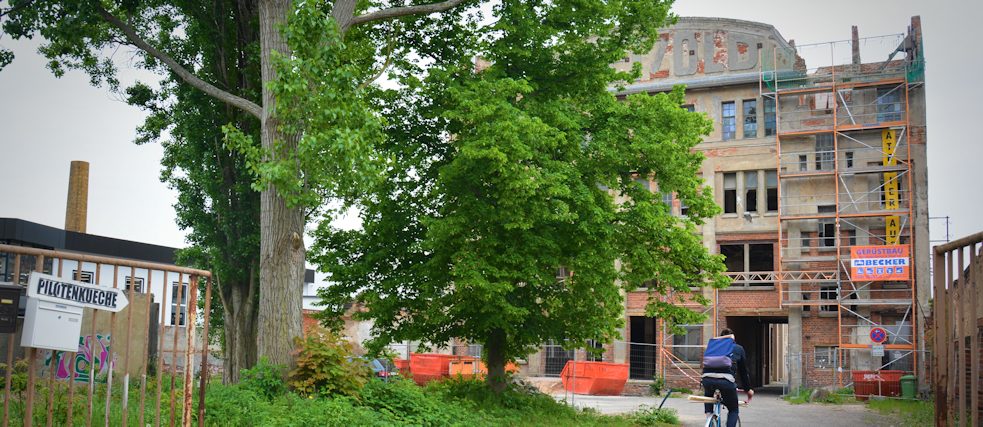
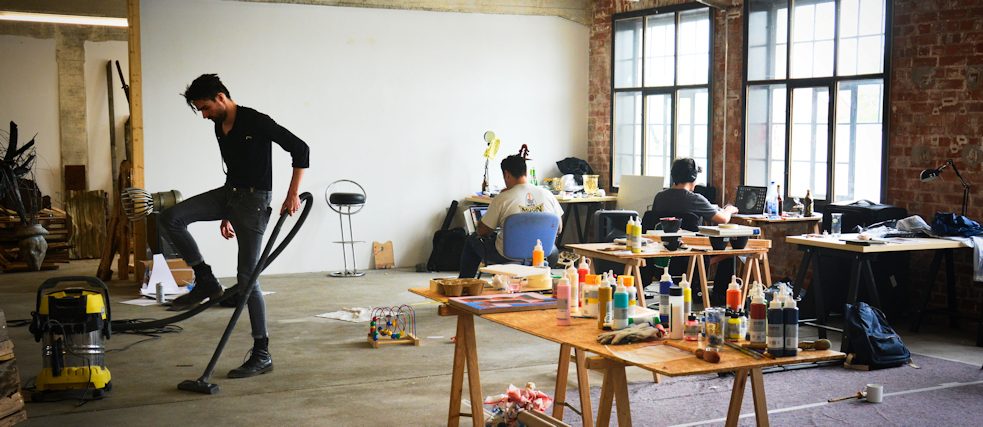
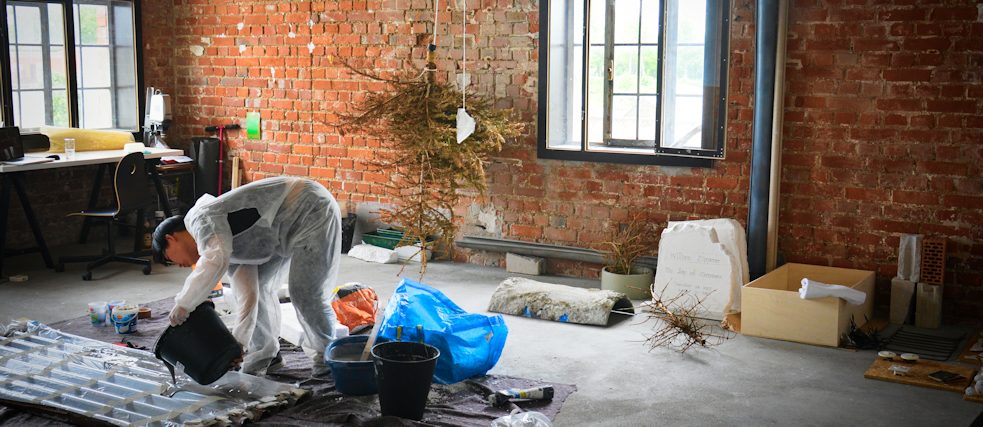
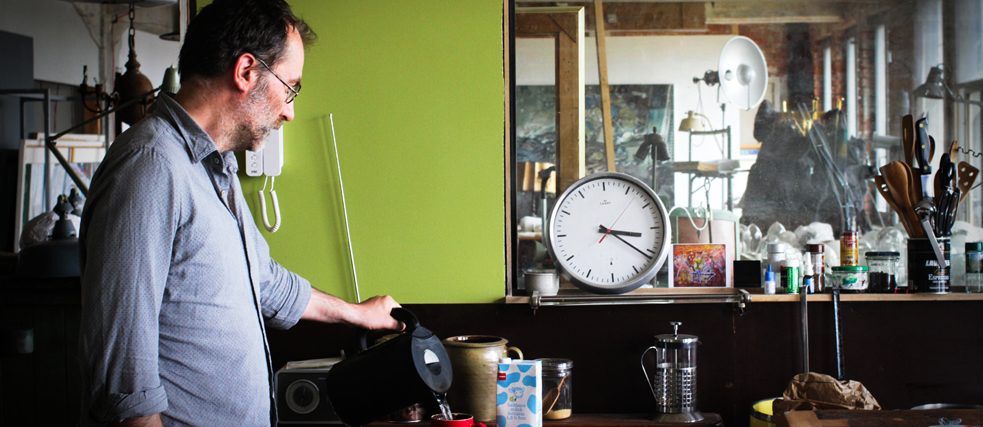
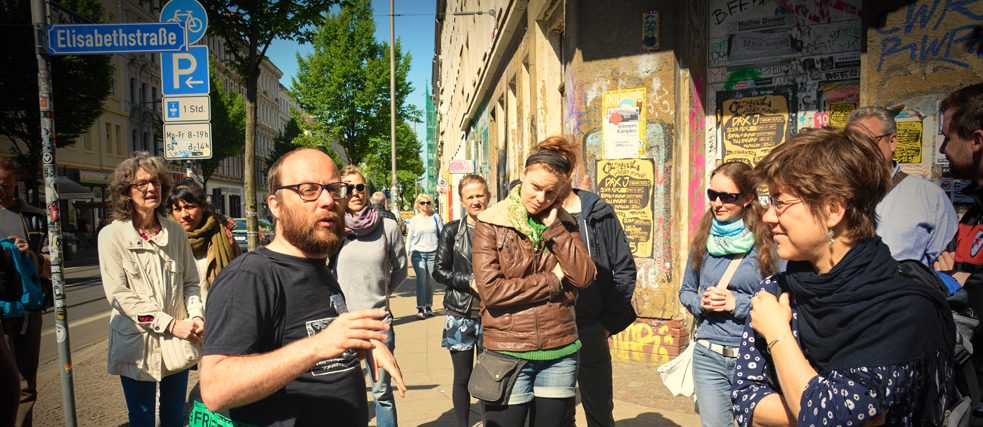
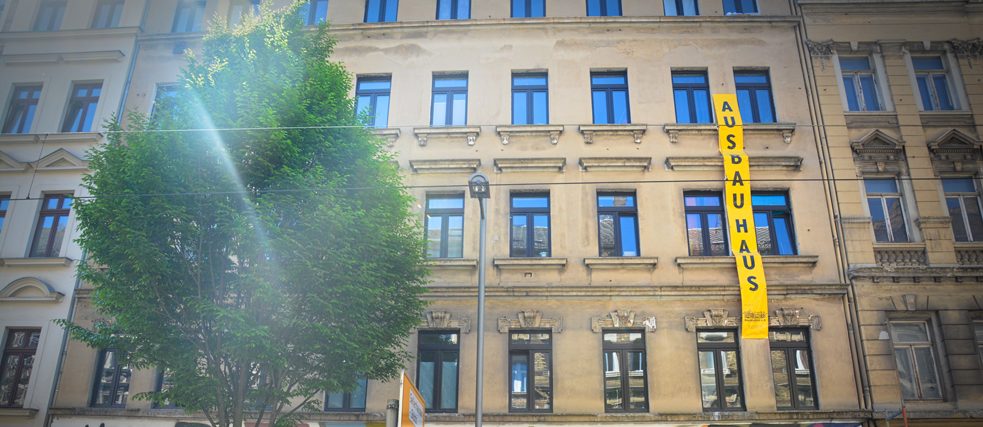
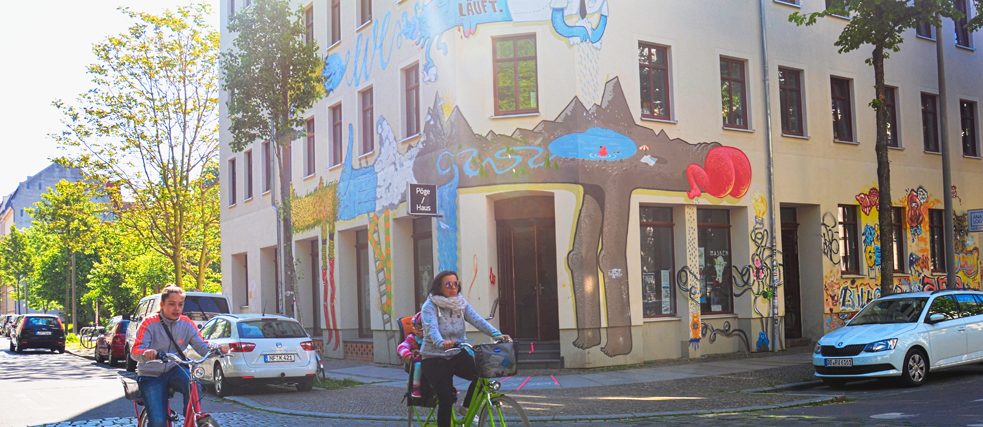
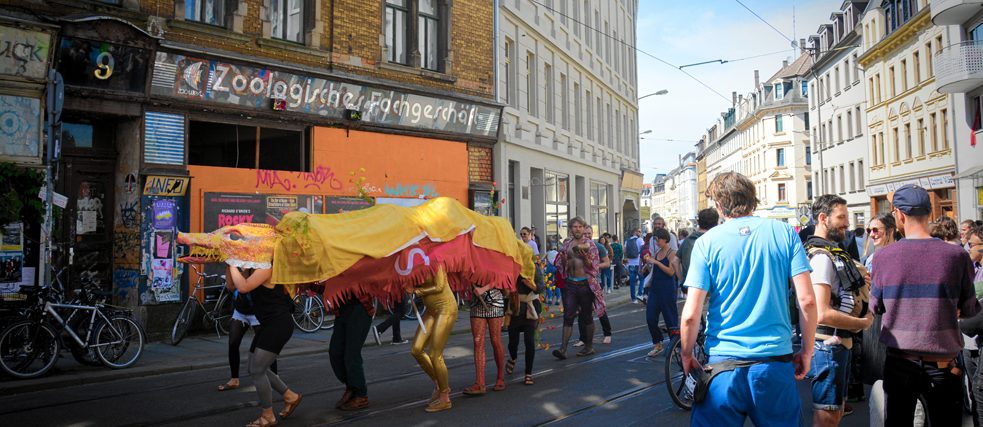
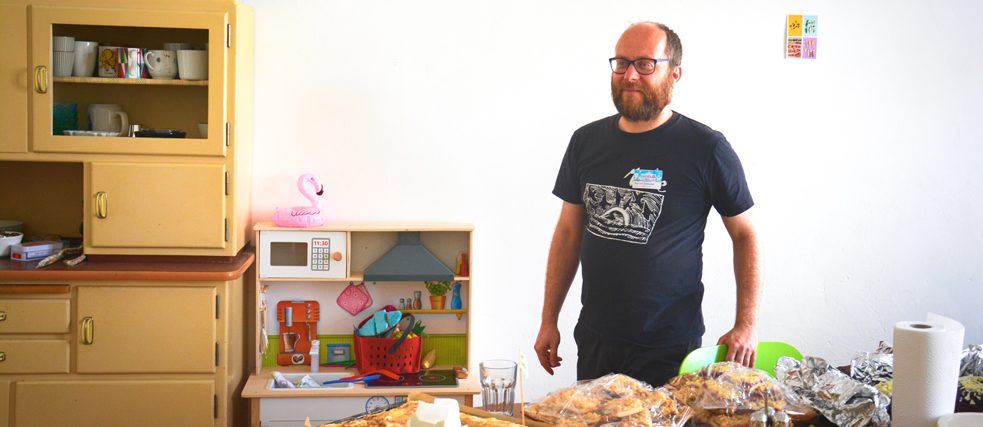
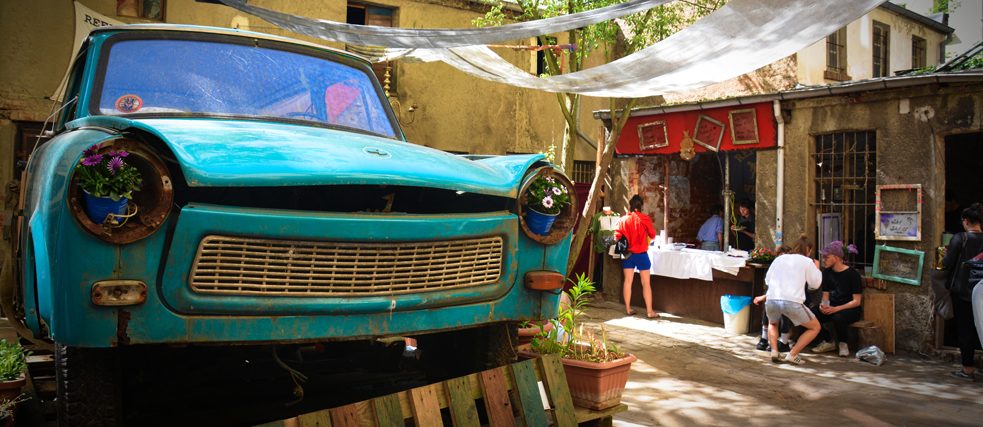
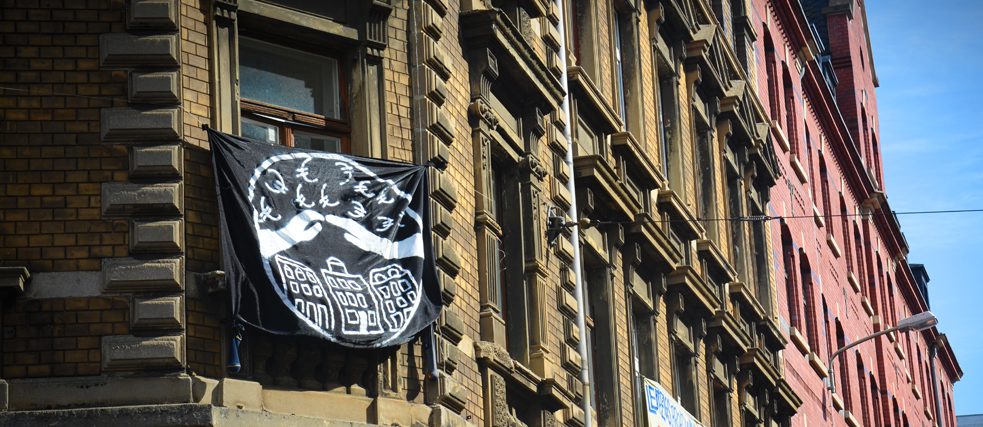
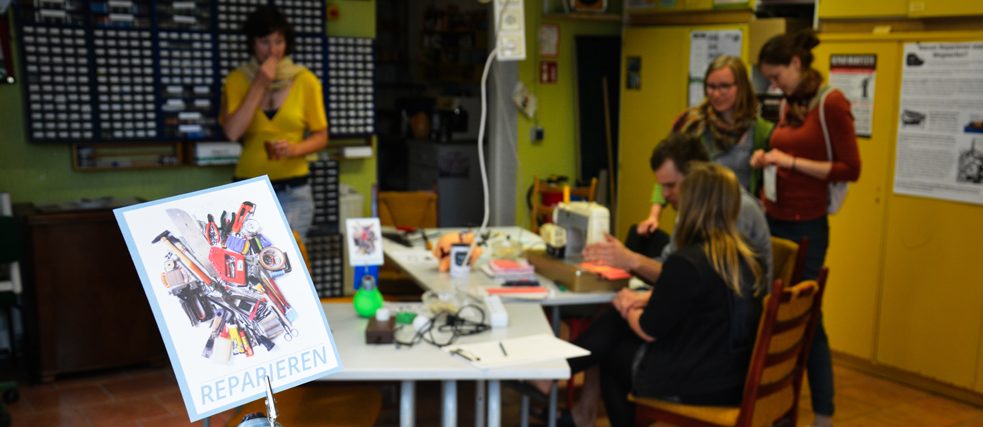
Comments
Comment